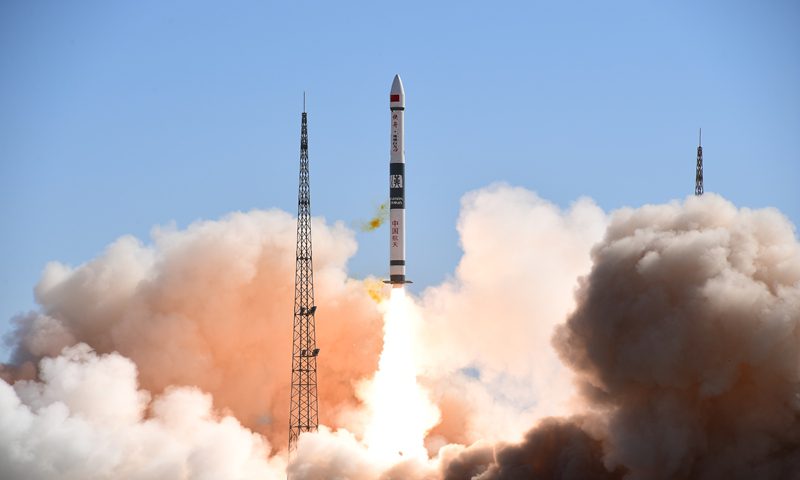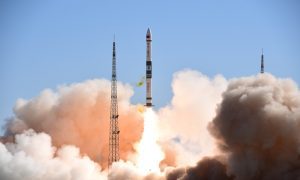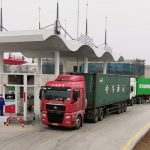Exclusive: First Wuhan-manufactured commercial rocket ready for launch post pandemic
独家报道:武汉制造的第一枚商用火箭在疫情后准备发射

The first locally manufactured commercial launch vehicle in Wuhan, capital of Central China’s Hubei Province and the region hardest hit by the COVID-19 epidemic at the beginning of 2020, is now undergoing final-stage testing and is ready for launch anytime, according to developers on Sunday.
Preparations have been completed on four new rockets which are awaiting orders for launch. The first of the Wuhan-manufactured launch vehicles will be codenamed Xinzhou after its birthplace in Wuhan’s Xinzhou district, sources with the Kuaizhou Rocket Complex at the Wuhan National Aerospace Industrial Base told the Global Times in an exclusive interview on Sunday.
Assembly and testing work on the rocket took place in the Xinzhou district-based Kuaizhou Rocket Complex in Wuhan, Global Times learned on Sunday.
Sources with the Kuaizhou rocket series developer, the state-owned China Aerospace Science and Industry Corp (CASIC), told the Global Times on Sunday that the Xinzhou rocket will be very similar to the Kuaizhou-1A solid-fueled launch vehicle model.
The Kuaizhou-1A rocket was developed from the Kuaizhou-1 rocket with improvements made in adaptability. It is a low-cost solid-fuelled carrier rocket with high reliability and short preparation period and was designed to launch low-orbit satellites weighing under 300 kilograms.
The Kuaizhou-1A commercial rocket has conducted nine successful missions, including the latest in May 2020 which sent the first two communication satellites of China’s new space-based 80-satellite network Internet-of-Things project codenamed Xingyun Engineering to be completed by around 2023. The Xingyun project aims to provide a solution to current “communication blind spots.”
The Xingyun-2 01 satellite launched in the 2020 mission was named after Wuhan, to promote and celebrate the city’s orderly resumption of work and production in the wake of a successful curbing of the epidemic.
Zhang Yong, an official at CASIC subsidiary Aerospace Xingyun Technology Limited, which leads the project, told the Global Times on Sunday that the firm is currently developing and manufacturing the third generation of the satellite series, codenamed Xingyun-3.
Xingyun-3 satellites will see comprehensive enhancement of its predecessor Xingyun-2 satellites in almost every technological criterion, with an increased single-satellite service coverage capability from 320,000 to 750,000 users per satellite, according to the official.
CASIC plans to send 12 of these satellites into orbit with the first six to be launched in a single mission scheduled for the second half of 2021 via a Kuaizhou-11 solid rocket, Zhang revealed.
Xingyun satellites were also developed and manufactured in Wuhan, at the city’s Satellite Industrial Park at the Wuhan National Aerospace Industry Base, just across the street from the rocket complex.
A smart production line capable of producing 240 small satellites per year was put into operation at the beginning of 2021, CASIC earlier told the Global Times. Once completed, the 28.4-hectare industrial park will be used for the research and development of space products, including satellite internet and micro craft, and will provide support for space monitoring, data processing and operations.
CASIC also told the Global Times that the rocket complex, which was designed to have an initial capacity of manufacturing 20 solid propellant rockets every year, will add new sectors specially for the research and development work for liquid engines and liquid-fueled rockets, and will become operational by the second half of this year.








